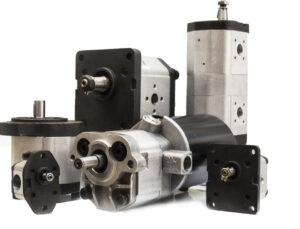Hydraulics is a technology and applied science that uses engineering, chemistry, and other fields to study the mechanical properties and applications of liquids. Hydraulic systems send and control power by a fluid, usually oil, A pump that pressurizes the fluid, a series of hoses or tubes that move the fluid, and one or more actuators that use the fluid to cause mechanical motion make the system. The pump presses the fluid before delivering it to the actuators, which use it to produce force or motion. The incompressibility of the fluid is essential for the efficiency of the hydraulic system. The force applied at one end of the system is transferred without loss to the other end because the fluid cannot be compressed. This lets hydraulic systems move heavy loads over great distances without suffering considerable energy loss. There are numerous essential parts of a hydraulic system. Pump: The fluid is pressured by the pump before being delivered to the rest of the system. Reservoir: The reservoir serves as both a storage space for the fluid and a place for it to return after use. Hose: The fluid is then transported to the remainder of the system using hoses or tubes. Actuators: The actuators move mechanically using fluid. Valves: Valves are used to control the flow and pressure of the fluid in the system. A hydraulic system uses a pump to pressurize fluid, which is then transported through hoses to the actuators. The valve opens to allow the fluid to apply pressure to the mechanical components, generating a force to move a load. The valve can be controlled manually or by automation. When the actuator is not needed, the valve closes, and the fluid returns to the reservoir. The hydraulic system can recycle fluid for multiple uses. There are various applications for hydraulic systems, some of which are as follows: It is essential to consider a variety of factors to optimize a hydraulic system for the best performance and efficiency: There are many different applications for hydraulic systems, from heavy machinery to delicate instruments. For those working in industries, it is important to understand the basics of hydraulics as well as how to optimize hydraulic systems for the best performance. Hydraulic systems can provide reliable power transmission for many years with the right component selection, regular maintenance, and careful system design.
How Do Hydraulics Work?

What a hydraulic system consists of?
How does a Hydraulic System work?
Application of hydraulic systems:
Hydraulic Systems Benefits:
Hydraulic system optimization:

lso affect how well the system functions. Efficiency can be increased by selecting superior components that are designed for a particular purpose.Conclusion:
phone+98 313 765 07 88
